I attended an English mass celebration last Sunday morning and was amused that many of the parishioners were wearing their ethnic attires. When we came to the readings, I was surprised when the first lector read in Kankana-ey, one of the dialects in the Cordillera region. I knew it was Kankana-ey because I understand and can speak the dialect. The Responsorial Psalms were read and answered in something I don't understand but I guess it was Kalanguya which is, again, one of the dialects in the region. The second reading was read in Ibaloi. I don't know how to speak this but I understand a little.
Wonder why there are different dialects in the region? Cordillera Administrative Region, CAR, has six provinces of Abra, Apayao, Benguet (this is where Baguio City is), Ifugao, Kalinga and Mt. Province. Within these provinces are different tribes who speak different dialects. There are Kankana-ey of Benguet and Mt. Province, Ibaloi of Benguet, Balbalan, Tinglayan and more in Kalinga, Itneg in Abra, and more...
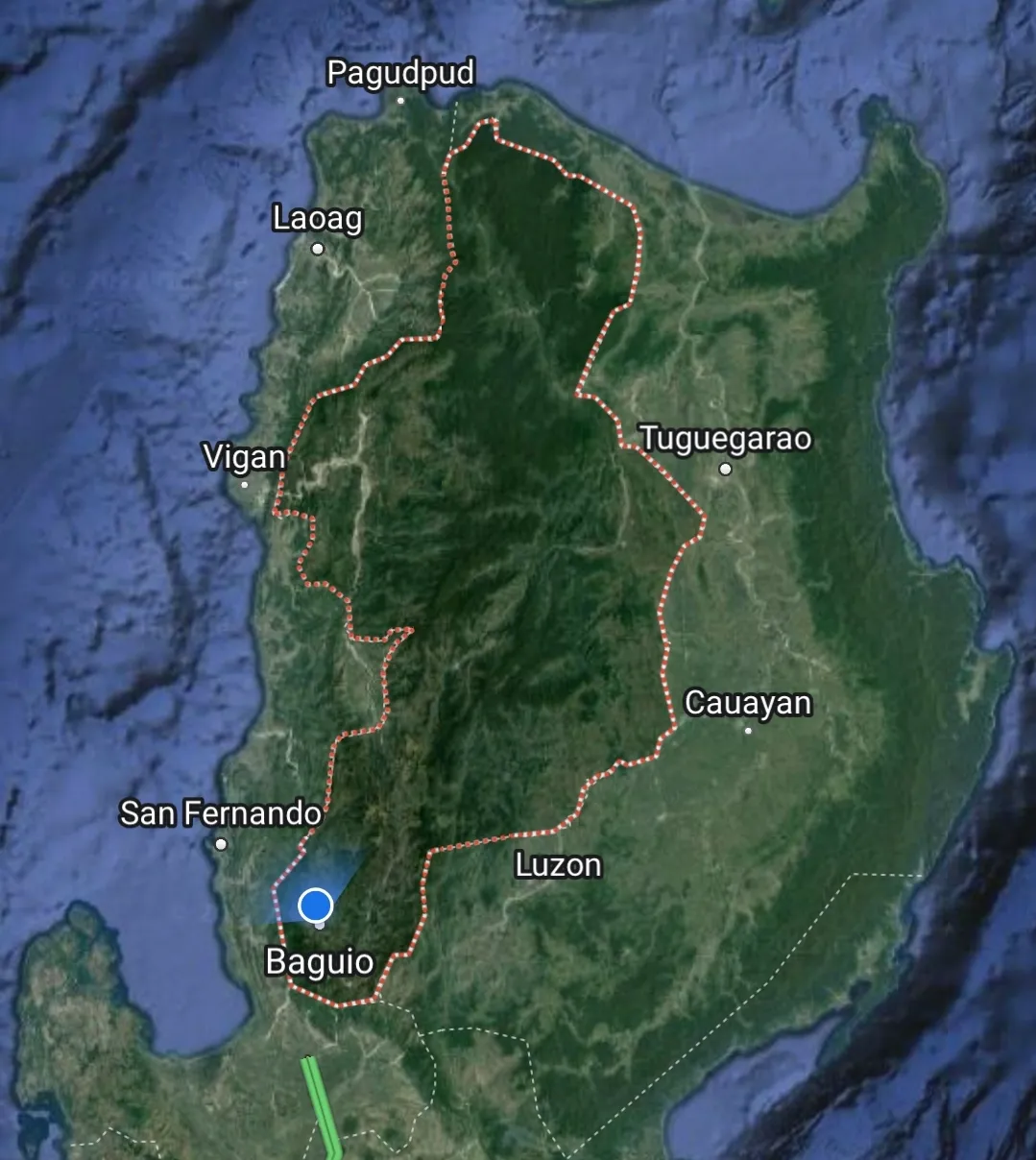
Northern part of the Philippines highlighting Cordillera Administrative Region, CAR, courtesy of Google Map
Back to the mass celebration, it was a good thing that I have pulled up the Bible app on my phone while on the way to the church. I already read through those readings except the Gospel. It looked like the priest will read it using different Cordillera dialects so I wondered what dialect the Gospel will be read with. When the priest took over the lectern, he spoke and read in English. Okay, cool!
And please don't ask me because I do not know how many dialects we have in the Cordillera.
While the priest was having his homily, the monitors flashed:
Twenty-eighth Sunday in Ordinary Time
Indigenous People's Sunday
That second line explained what was going on.
After the concluding rite, ethnic music started playing. Gong and drum players were on the right side and four ladies came dancing in front.
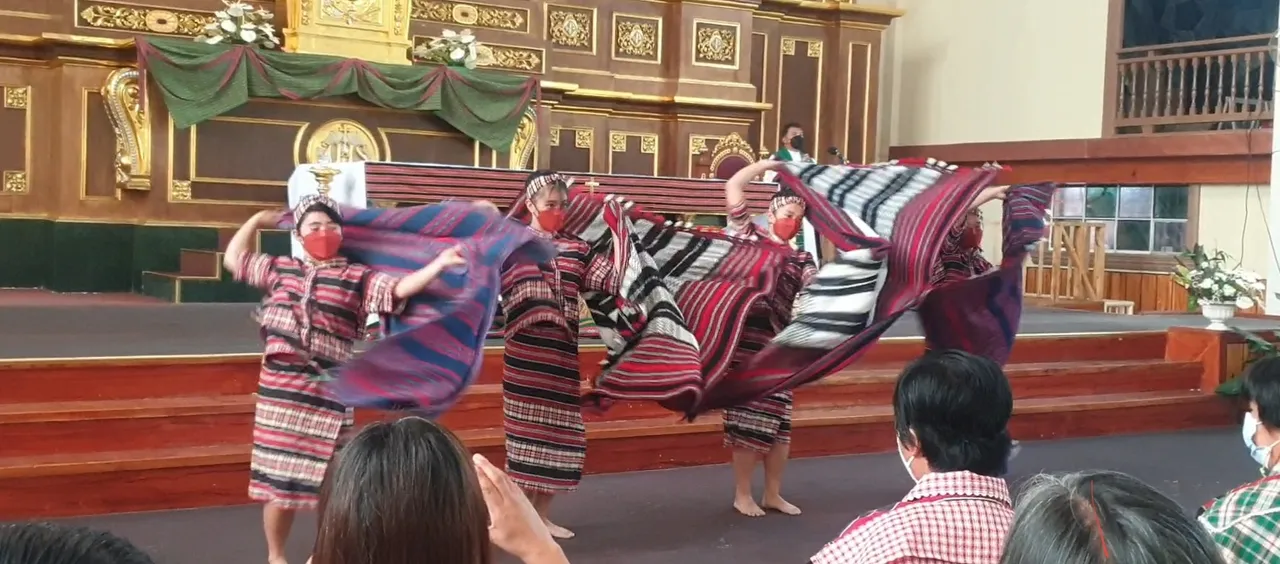
The performers exited after a while and the priest followed with his entourage. The performance continued in front of the church. The priest joined in.
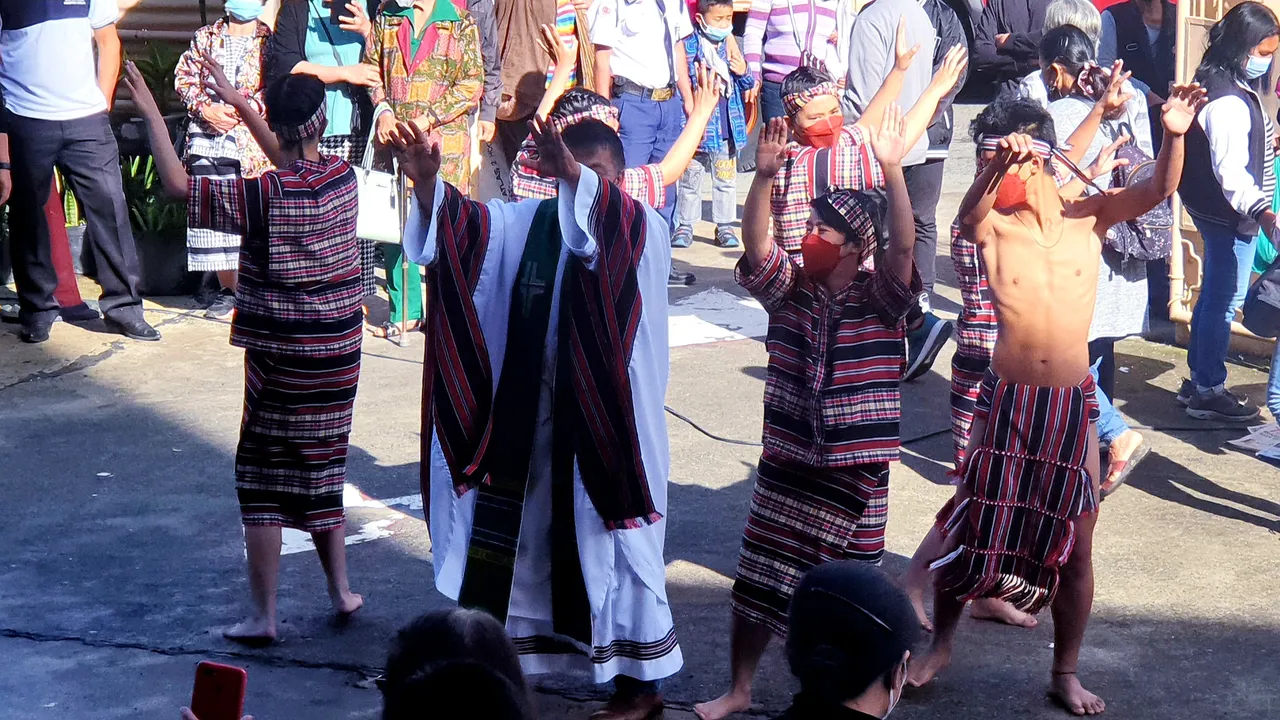
The celebration made me remember last election time. One of the board of canvassers member, who happened to be my high school mate, asked when I ligned up to sign in.
"Are you an IP member? Indigenous?"
"Why?"
"Sort of census thing. Statistics."
Funny as it may seem, I have been hearing indigenous people terminology but I never bothered to really understand what it means so I asked this time.
"Define indigenous."
Her answer was very simple. "Are your roots in here?" She meant in the highlands of Cordillera. I said yes. I was born and raised outside of Cordillera but my parents were from here.
"Then you're one of the IPs."
Still, I don't know what indigenous people meant.
According to United Nations;
"Indigenous peoples are inheritors and practitioners of unique cultures and ways of relating to people and the environment. They have retained social, cultural, economic and political characteristics that are distinct from those of the dominant societies in which they live."
There was an exhibition area on the left side of the church. Indigenous stuff were on display. Let's take a look at them.
Tapis
Tapis is a handwoven cloth used by women usually as wrap-around skirt. It has different designs depending on the indigenous group in the region. During special occassions, women would pair this with a blouse that was also handwoven. My mother used to weave these. She said some designs are meant for specific occasion. I did not pay attention as to which design is for which occasion.
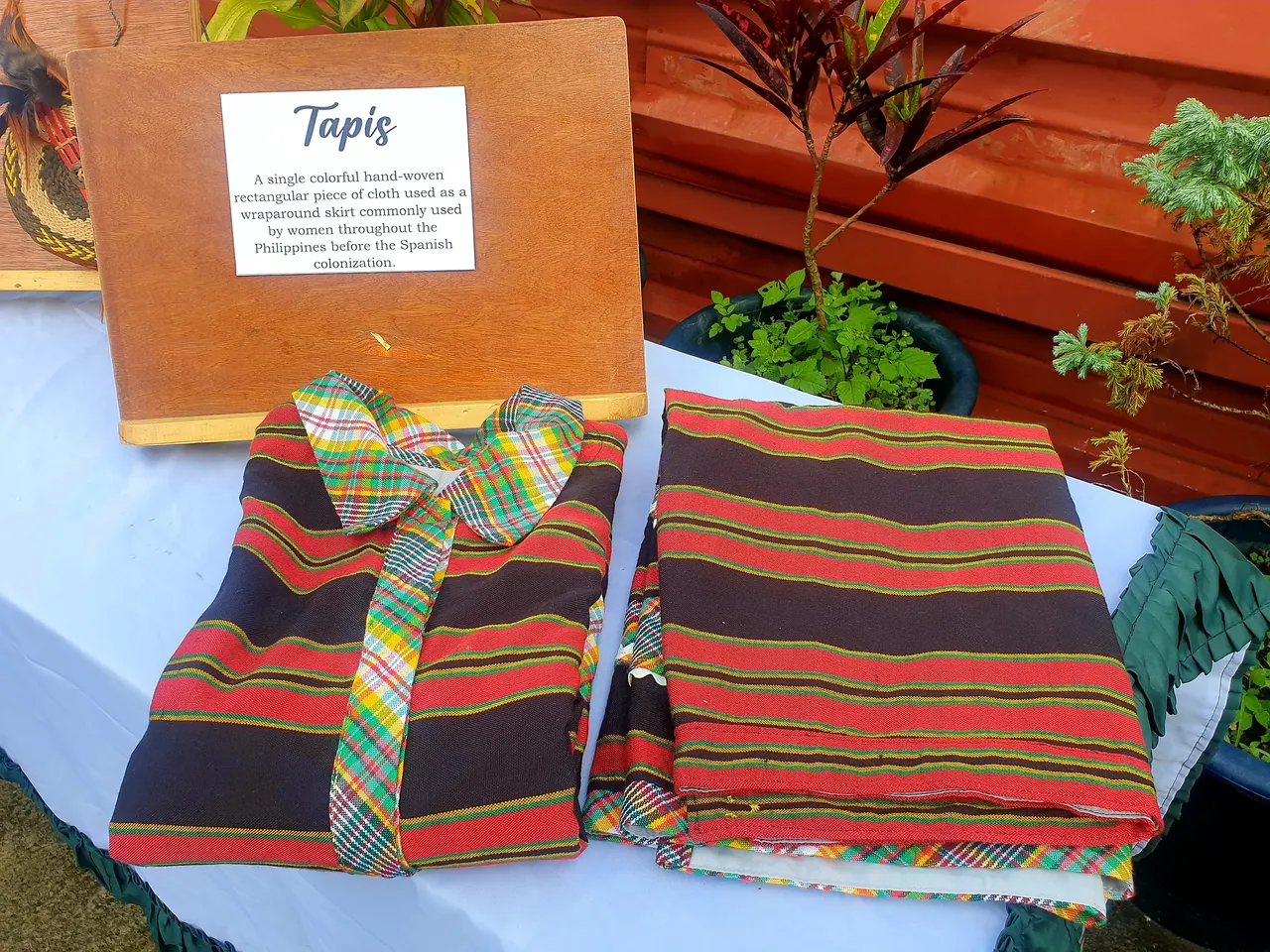
The garment on the left is the blouse that is paired with the tapis. My mother called their blouse version as "penet"
Tukob
This is a headpiece and is made from either rattan or bamboo. It is usually accentuated with feathers. It is used by men to keep their stuff with them like tobacco or money.
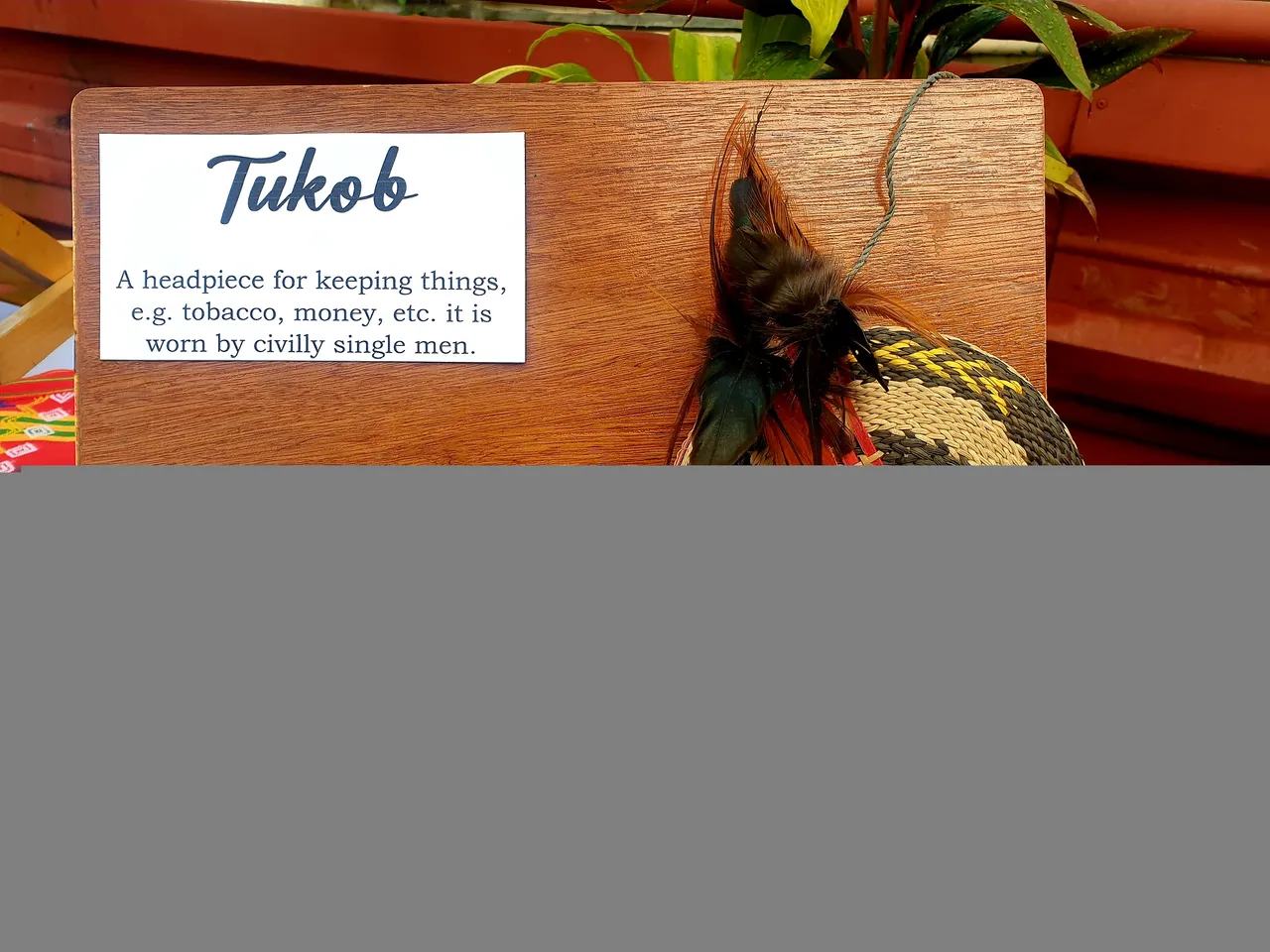
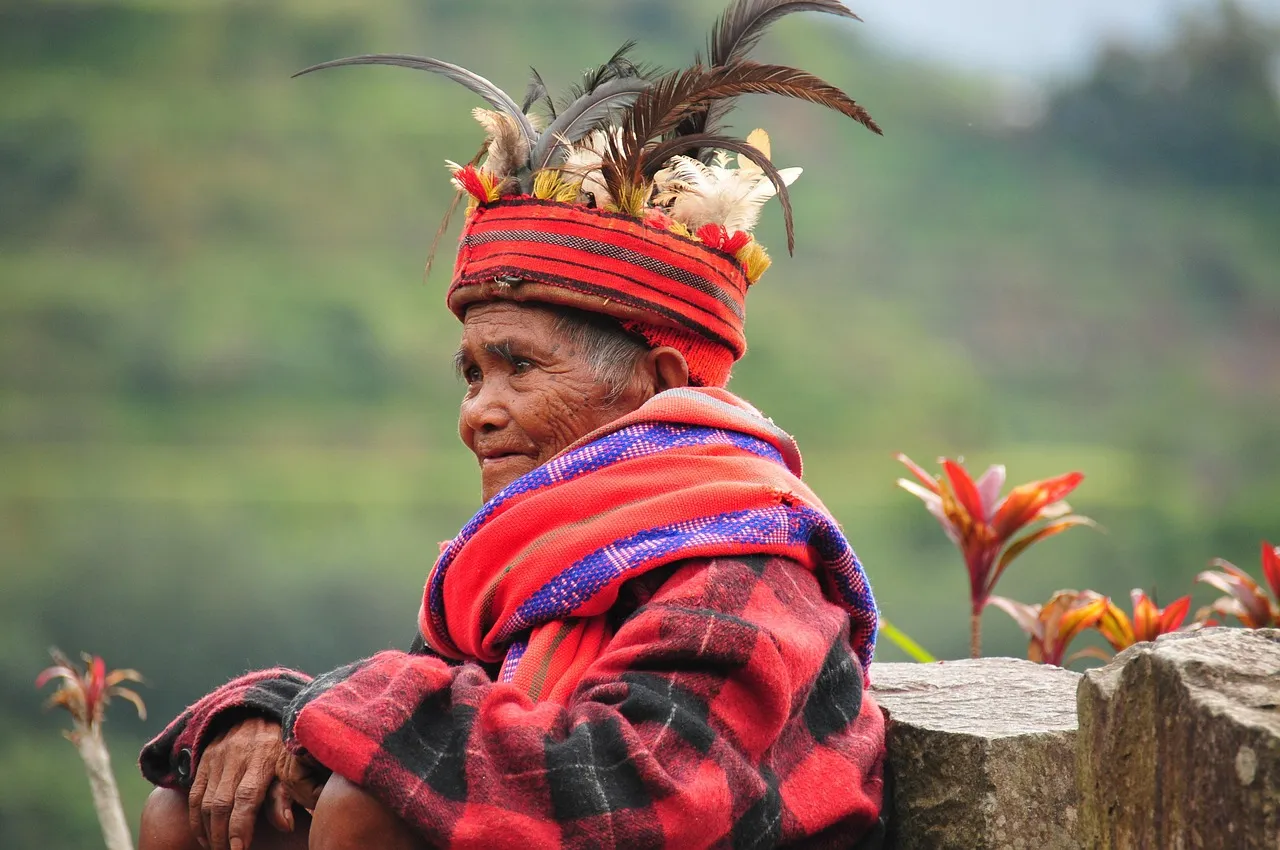
Elderly man of Mt. Province wearing tukob
Wanes
Wanes is a loincloth used by men. The label on the display gives it another name "Baag" but that is technically an Ilocano term, a dialect not original from the Cordillera but is widely used.
The label also states this wanes may also be made of bark cloth and that is amusing. I never saw one made of such material.
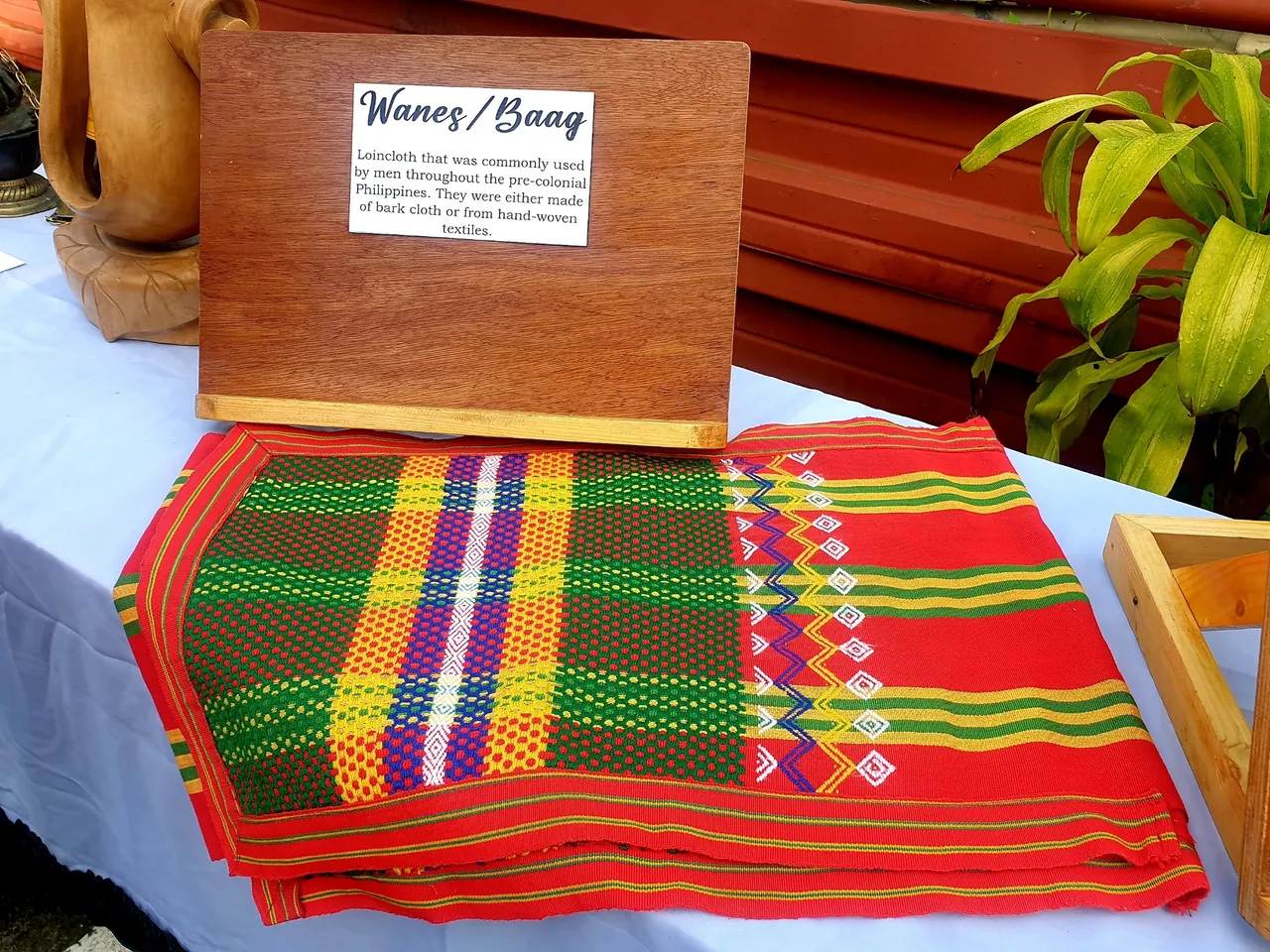
Gayang
This is basically a spear with barbed head which is one of the traditional weapons if the Igorots. They usually use it for hunting.
When I checked the back end of the handle of that on display, it has plain spearhead, no barb. Ah, my father's two gayang do not have spearhead at the back end of the handle, I thought. My father had a pair of these as antique collection.
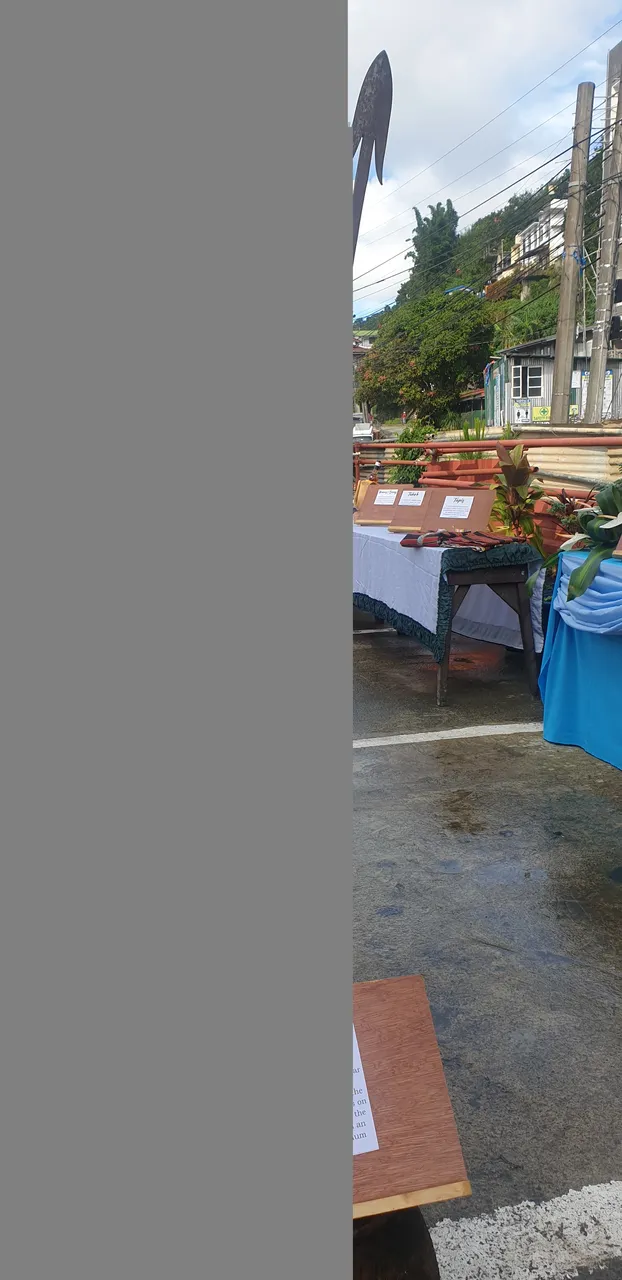

This is the spearhead of that back end of the handle
Gangsa
This is gong made of bronze. It is a very popular music instrument in the region. The sound it produces depends its size, position and pressure the player applies. Gangsas are usually brought out during special occassions like cañao which is the general term for festivities - mainly thanksgiving or manifestation.
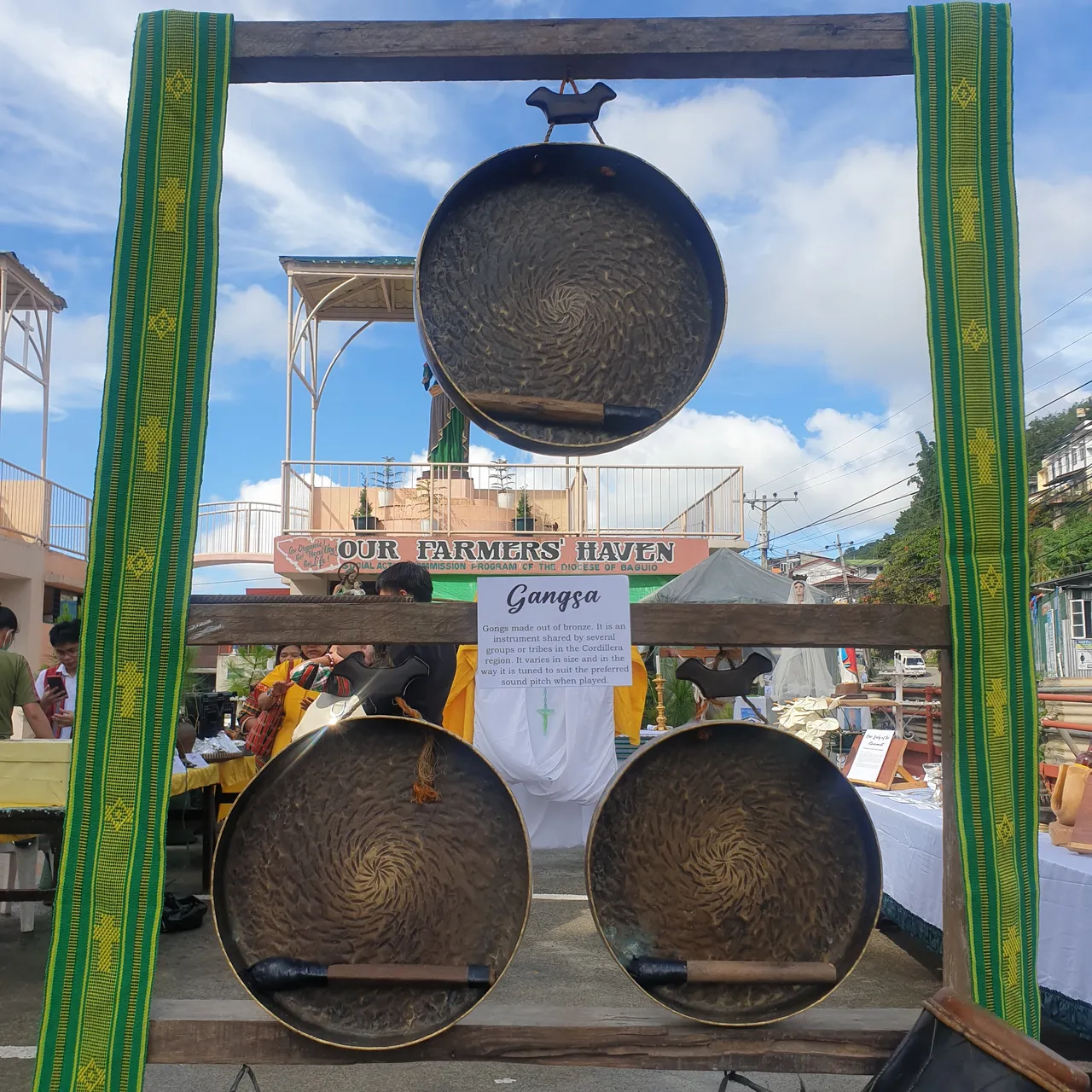
Solibao
This is the Igorot musical drum. It is made of hollowed wood, usually a tree trunk, and the opening is covered with animal skin. It is ideally paired with the gangsa though, it is not as available as gangsa these days. It is very rare now that I see solibao being played during especial occassions.

Gusi
Gusi is clay jar mainly used these as container for fermented rice wine. When I was young, my mother said others also used it before as water jug.
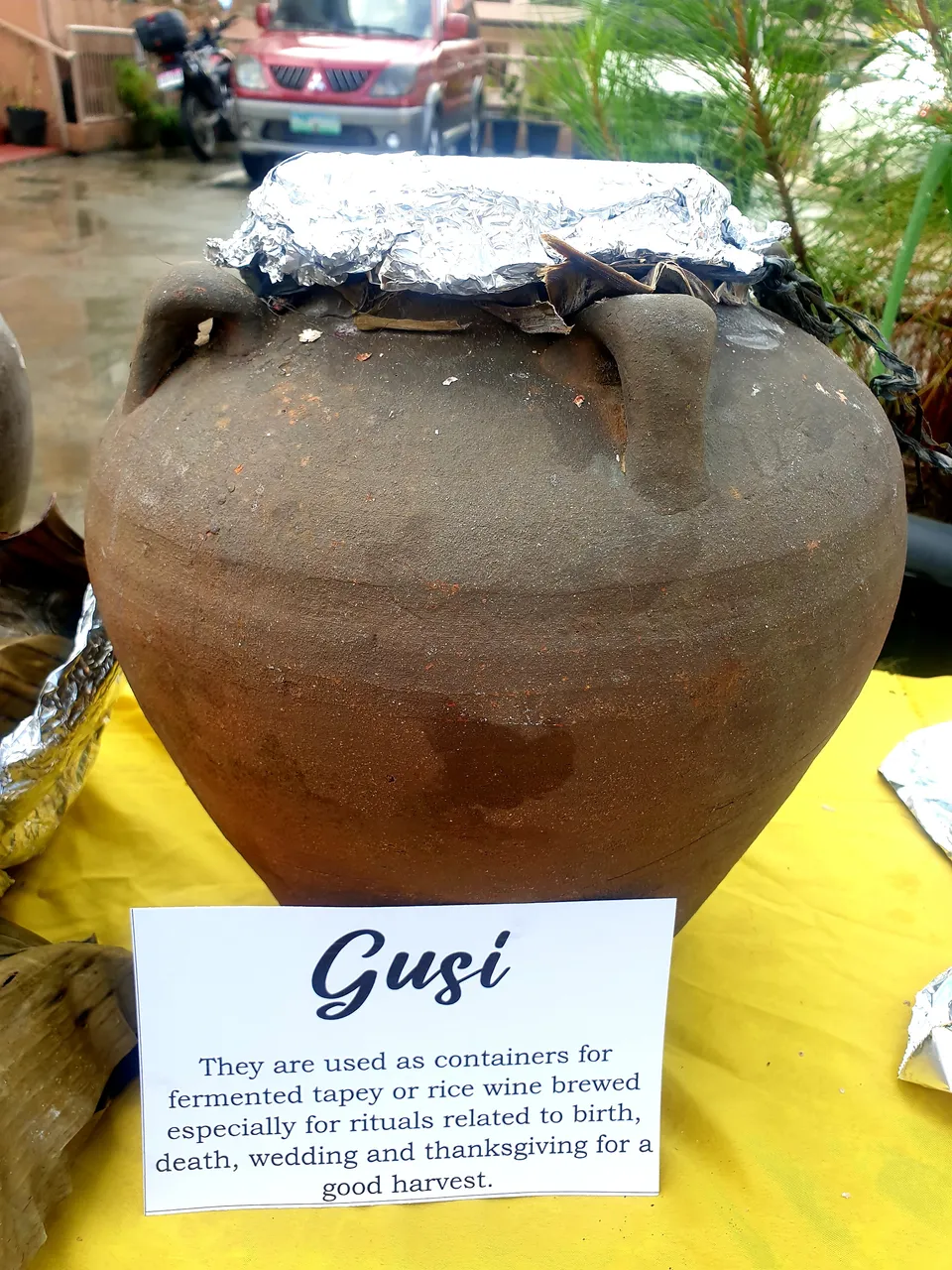
Tapey
That is rice wine. Along with the gangsa this used to be seen during special occassions. These days, there are people selling them in tourist spots within the region especially in Baguio City.
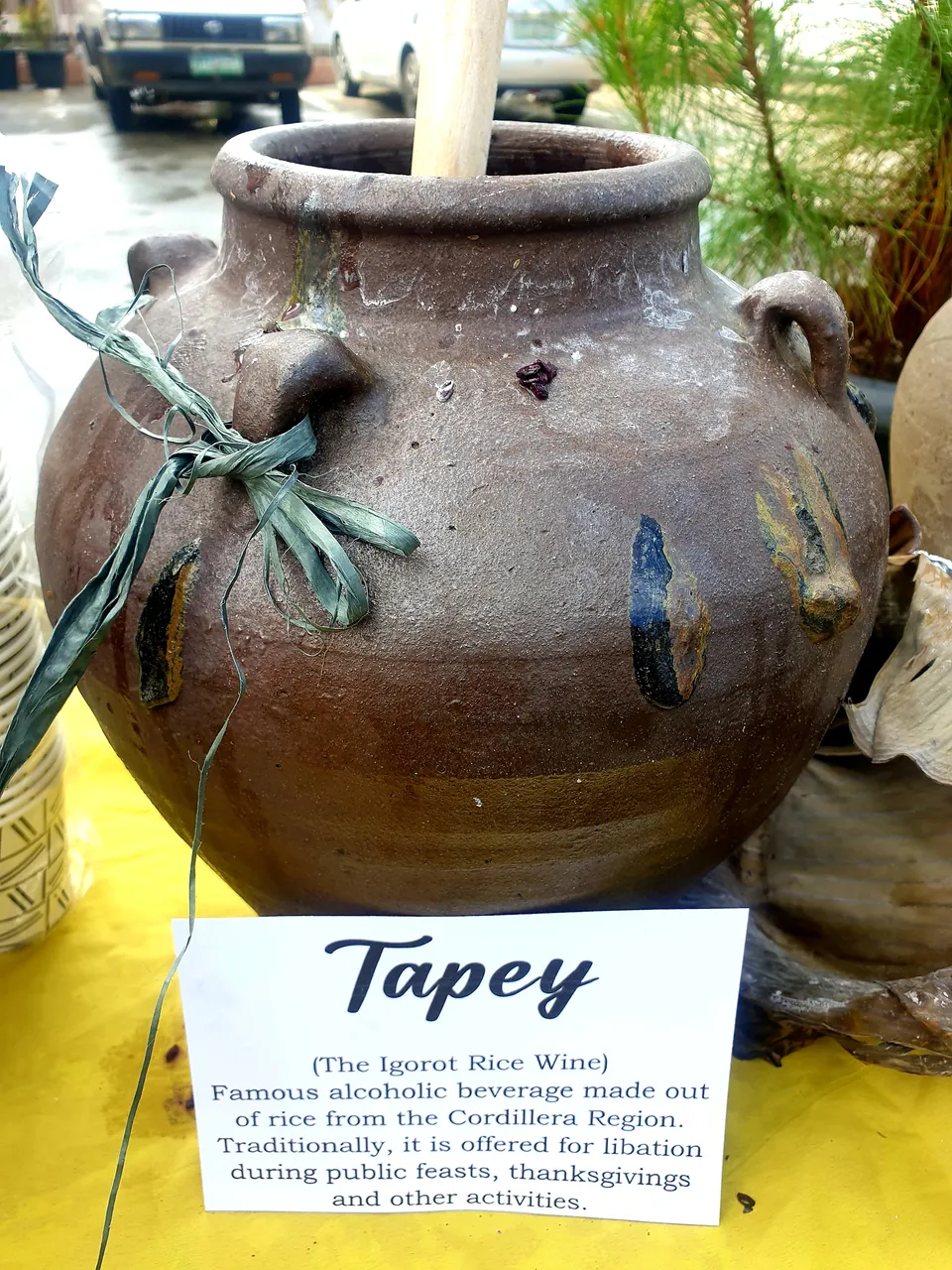
By the way, the displayed tapey was for community consumption along with other foods served openly - boiled sweet potato, saba and turon. I had three turons. If it wasn't too early at just past eight in the morning, I could have tries the tapey. 😊
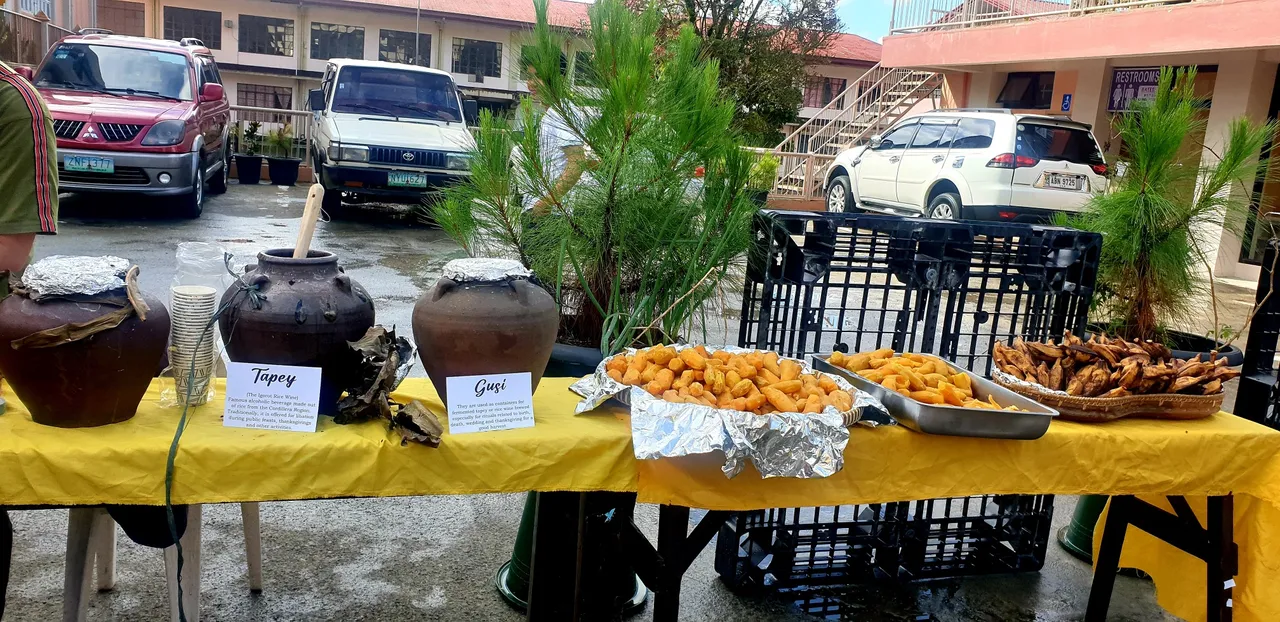
There are so much more to tell about the Igorots but that would require further research. I can only relate to what I heard from my mother and other elderlies, and what I see these days. Maybe I will write more when I learn more...
Have a great week, beautiful folks!